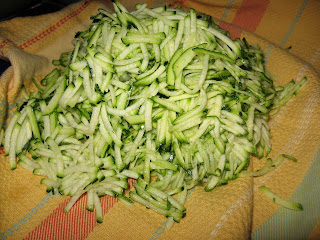 This week, I went to a u-pick farm for the first time. I guess I have been to a u-pick farm before. I remember going strawberry picking once in Carnation, WA with my elementary school friend, Shannon, and her family when I was in the fourth or fifth grade. But since it has been so long since that experience, it feels like the first time. And like most things in my life, I got really enthusiastic about it and ended up going twice in one week - during the hottest week we've had in a long time. Apparently, super hot rays of sun won't stop me.
This week, I went to a u-pick farm for the first time. I guess I have been to a u-pick farm before. I remember going strawberry picking once in Carnation, WA with my elementary school friend, Shannon, and her family when I was in the fourth or fifth grade. But since it has been so long since that experience, it feels like the first time. And like most things in my life, I got really enthusiastic about it and ended up going twice in one week - during the hottest week we've had in a long time. Apparently, super hot rays of sun won't stop me.  When I got the bug to do this, I looked on-line for a good spot to go. I found a super helpful website called pickyourown.org that has information on all the local u-pick farms in the different counties in our area. I was originally going to go to a farm in Carnation, which seems to have a plethora of u-pick farms to choose from. But then, I found the Overlake Blueberry Farm in Bellevue, just 20 minutes from my house, resulting in berries even more local than the others. Not only is the farm practically in my own backyard, but it's organic too and they sell the blueberries for only...drum roll please...$1.50 a pound ($1.25 if you have 5lbs or more)!
When I got the bug to do this, I looked on-line for a good spot to go. I found a super helpful website called pickyourown.org that has information on all the local u-pick farms in the different counties in our area. I was originally going to go to a farm in Carnation, which seems to have a plethora of u-pick farms to choose from. But then, I found the Overlake Blueberry Farm in Bellevue, just 20 minutes from my house, resulting in berries even more local than the others. Not only is the farm practically in my own backyard, but it's organic too and they sell the blueberries for only...drum roll please...$1.50 a pound ($1.25 if you have 5lbs or more)!  On Tuesday, my good friend, Nicole, braved the sun and picked blueberries with me for two hours. We ended up with over 10 pounds of blueberries. Today, my sister, Rachel, and I picked blueberries for another two hours. Today, my bucket weighed in at 5.17 pounds - just a little more than what I collected on Tuesday.
On Tuesday, my good friend, Nicole, braved the sun and picked blueberries with me for two hours. We ended up with over 10 pounds of blueberries. Today, my sister, Rachel, and I picked blueberries for another two hours. Today, my bucket weighed in at 5.17 pounds - just a little more than what I collected on Tuesday.  So, what am I planning to do with my 15 pounds of blueberries? I have already started freezing a ton, so that we'll have yummy summer fruit this winter. According to the handy book Jake got me for my birthday, The Busy Person's Guide to Preserving Food, the best way to preserve blueberries is to freeze the berries on a tray and then put them in a freezer bag. So far, I have frozen 21 cups of blueberries. The cool thing about frozen blueberries is that they can be used in recipes just as well, if not better, as fresh blueberries.
So, what am I planning to do with my 15 pounds of blueberries? I have already started freezing a ton, so that we'll have yummy summer fruit this winter. According to the handy book Jake got me for my birthday, The Busy Person's Guide to Preserving Food, the best way to preserve blueberries is to freeze the berries on a tray and then put them in a freezer bag. So far, I have frozen 21 cups of blueberries. The cool thing about frozen blueberries is that they can be used in recipes just as well, if not better, as fresh blueberries. I have also been making some fantastic dessert recipes that feature blueberries. Like I mentioned in last week's post, the recipe for Blueberry Boy Bait from SmittenKitchen.com is delicious. I also made this amazing Sunset recipe for Huckleberry Skillet Cobbler with blueberries. I highly recommend it. Just don't bake it when temperatures are going to be in the 100s or you'll feel like you're baking too. I learned that the hard way.




























